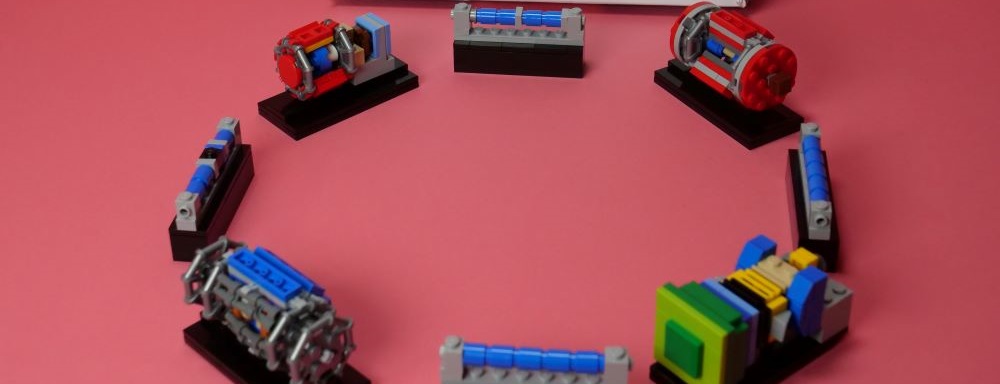
The Large Hadron Collider (LHC) is the world’s largest and most powerful particle accelerator. It first started up on 10 September 2008, and remains the latest addition to CERN’s accelerator complex. The LHC consists of a 27-kilometre ring of superconducting magnets with a number of accelerating structures to boost the energy of the particles along the way.
Find out more about the Large Hadron Collider.
The different detectors:

ATLAS
ATLAS is one of two general-purpose detectors at the Large Hadron Collider (LHC). It investigates a wide range of physics, from the Higgs boson to extra dimensions and particles that could make up dark matter. Although it has the same scientific goals as the CMS experiment, it uses different technical solutions and a different magnet-system design.
Beams of particles from the LHC collide at the centre of the ATLAS detector making collision debris in the form of new particles, which fly out from the collision point in all directions. Six different detecting subsystems arranged in layers around the collision point record the paths, momentum, and energy of the particles, allowing them to be individually identified. A huge magnet system bends the paths of charged particles so that their momenta can be measured.
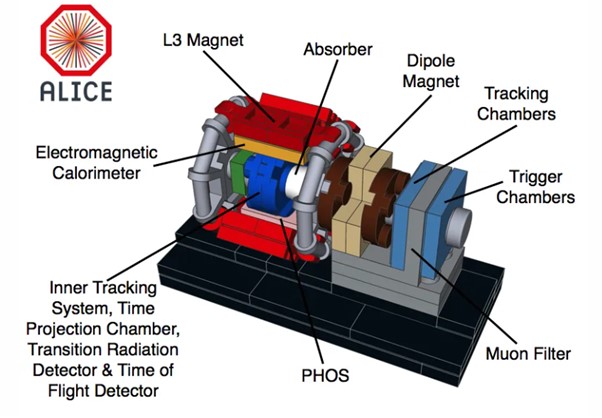
ALICE
ALICE (A Large Ion Collider Experiment) is a detector dedicated to heavy-ion physics at the Large Hadron Collider (LHC). It is designed to study the physics of strongly interacting matter at extreme energy densities, where a phase of matter called quark-gluon plasma forms.
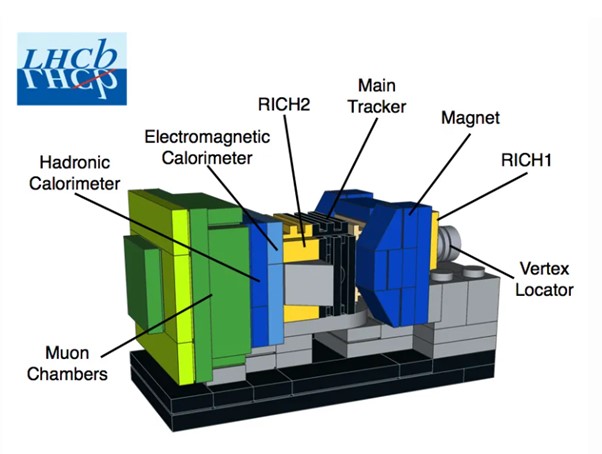
LHCb
The Large Hadron Collider beauty (LHCb) experiment specializes in investigating the slight differences between matter and antimatter by studying a type of particle called the "beauty quark", or "b quark".
Instead of surrounding the entire collision point with an enclosed detector as do ATLAS and CMS, the LHCb experiment uses a series of subdetectors to detect mainly forward particles – those thrown forwards by the collision in one direction. The first subdetector is mounted close to the collision point, with the others following one behind the other over a length of 20 metres.
"The LHCb experiment will shed light on why we live in a universe that appears to be composed almost entirely of matter, but no antimatter"
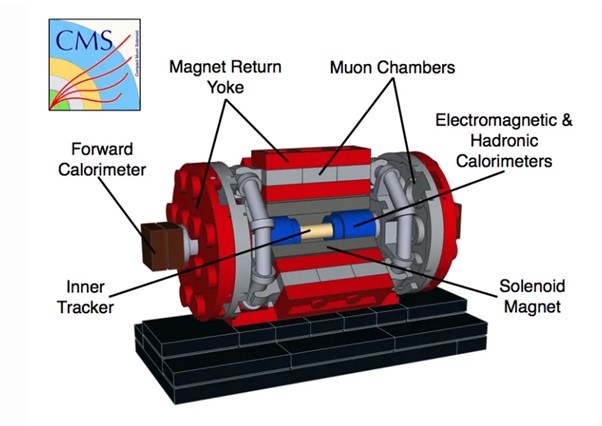
CMS
The Compact Muon Solenoid (CMS) is a general-purpose detector at the Large Hadron Collider (LHC). It has a broad physics programme ranging from studying the Standard Model (including the Higgs boson) to searching for extra dimensions and particles that could make up dark matter. Although it has the same scientific goals as the ATLAS experiment, it uses different technical solutions and a different magnet-system design.
The CMS detector is built around a huge solenoid magnet. This takes the form of a cylindrical coil of superconducting cable that generates a field of 4 tesla, about 100,000 times the magnetic field of the Earth. The field is confined by a steel “yoke” that forms the bulk of the detector’s 14,000-tonne weight.
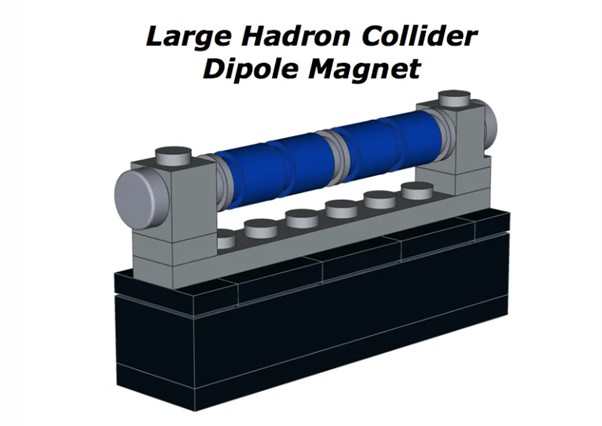
LHC dipole magnet
The Large Hadron Collider (LHC) is currently operating at the energy of 6.5 TeV per beam. At this energy, the trillions of particles circle the collider's 27-kilometre tunnel 11,245 times per second. Before they reach the LHC, the particles are sped up in a series of interconnected linear and circular accelerators: once they reach the maximum speed that one part of the accelerator chain can achieve, they are shot into the next. Without any other force involved, the particles would drift apart and their momentum would carry them in a straight line. More than 50 types of magnets are needed to send them along complex paths without their losing speed.
9+
373 LEGO® pieces
Building set
Design: Nathan Readioff
